Services
There are several different styles of acupuncture. That is why when I hear someone say “I tried acupuncture but it did not work for me.” I respond “you need to find a different style.” Several styles of acupuncture are practiced at Eastern Shore Acupuncture. Each has its strengths, and I may utilize one or a combination, depending upon your diagnosis and presentation.
Acupuncture Physical Medicine with dry needling
Our goal is to empower our patients through education about both their condition as well as their treatment options. By coordinating and integrating an individual’s care with their other healthcare providers, we ultimately provide a truly comprehensive approach.
Our non-judgmental approach to healing the body, mind and spirit recognizes that acupuncture can help your body heal itself and is an effective partner to other therapies such as physical therapy, chiropractics, osteopathics, naturopathics, massage/reflexology, as well as mental health care and other medical interventions.
Kiiko Matsumoto or KM Style
Kiiko Matsumoto or KM Style is a Japanese style formulated by renowned teacher, Kiiko Matsumoto. Her method thrives as a living tradition, a synthesis derived from her own teachers, Master Nagano, Master Kawaii and Dr. Manaka. KM style relies extensively upon palpation of the abdomen and other reflex zones of the body, very fine needles with shallow insertion, and the use of tools unique to Japan, such as silver diode chains, diode rings and magnets, ion and triple bypass cords.
Traditional Chinese Medicine
TCM or Traditional Chinese Medicine is the “default” style that is taught in almost all acupuncture schools and is the style upon which the national certification exams are based. This style relies upon questions, observation of tongue, complexion, and palpation of pulse, to choose a standardized diagnosis of pattern and treatment. The needles tend to be a little thicker and insertion deeper. Guasha, a scraping technique used to loosen fascia, and cupping are both non-needling techniques commonly used in TCM.
Classical Chinese Acupuncture
Classical Chinese Acupuncture, as taught by Master Jeffrey Yuen, is a broad and comprehensive tradition from which TCM was derived. Classical Chinese has a deep history with many schools, but what distinguishes it from TCM is that it is very multi-faceted, with a highly individualized diagnosis and treatment, is rooted in the naturalist philosophy of Daoism, and possesses a synthetic (as opposed to analytic) approach.
Gua sha
Gua sha has been an integrated therapeutic modality in Chinese Medicine for millennia. The practitioner takes an implement, either a jar lid or a special tool, and scrapes (gua), or “press-strokes” the skin in one direction several times. This creates “transitory therapeutic petechiae”, the appearance on the skin of stripes or areas of mottled purple or red (sha), which arise from the action of scraping.
Cupping
Cupping, similarly to gua sha, is a method rooted in a long history of Chinese medicine. Essentially, the practice of cupping involves suction of cup on skin, enabling the skin to lift from the subcutaneous layers and increasing local flow of blood and fluids. Prolonged cupping can lead to purple ‘bruise’ marks, similar to the petechiae that surfaces in gua sha.
MOXIBUSTION
Moxa is one of the oldest therapies in Chinese medicine, and many scholars believe it predates acupuncture. Acupuncture and moxibustion evolved together, and are often used together in a treatment, both In Chinese and Japanese medicine. Its therapeutic effects are wide ranging and well documented.
Tui Na
Eastern Shore Acupuncture offers Tui Na as an adjunct to the acupuncture treatment, primarily for structural and muscular injuries and conditions. Tui Na (pinch and pull) is a therapeutic type of deep massage that has been a pillar of Chinese medicine for many centuries.
QIGONG
Qigong literally means the skilled practice of gathering universal life force or qi. It is a mind-body-spirit practice that improves one’s mental and physical health by integrating posture, movement, breathing technique, self-massage, sound, and focused intent. It is used both preventatively and medicinally, offering healing for an array of physical and emotional conditions.
MEDITATION & MINDFULNESS
Meditation is the practice of training your mind to focus and redirect your thoughts, allowing one to let go of negativity, and calm both your mind and body. Practicing meditation doesn’t require props or preparation (no candles, incense, or special cushions are needed.) Meditation has many scientifically proven benefits including stress reduction, as well as generating feelings of kindness and wellbeing.


